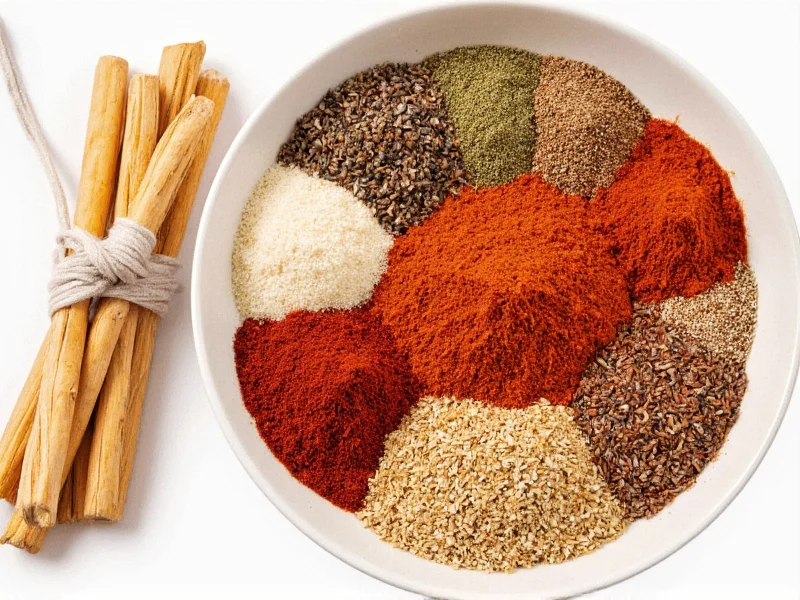The best substitute for all spice is a blend of 1/2 teaspoon cinnamon, 1/4 teaspoon nutmeg, and 1/4 teaspoon ground cloves for every 1 teaspoon of allspice required. This combination accurately replicates allspice's complex flavor profile, which is actually a blend of these three spices rather than a single spice. For quick substitutions, 1 teaspoon of pumpkin pie spice or apple pie spice can also work in most recipes.
Understanding Allspice and Its Substitutes
Allspice, despite its name, isn't a blend but a single berry from the Pimenta dioica tree native to Central America and the Caribbean. Its name comes from its flavor profile that resembles a combination of cinnamon, nutmeg, and cloves. When you need a substitute for all spice, understanding this unique flavor composition is crucial for maintaining your recipe's intended taste.
Why You Might Need an Allspice Substitute
Running out of allspice happens to every home cook. Whether you're preparing Jamaican jerk seasoning, pumpkin pie, or mulled wine, having reliable alternatives ensures your cooking isn't derailed. The best substitute for all spice depends on your recipe type and available pantry ingredients. Many cooks mistakenly believe allspice is a pre-mixed blend, but knowing it's a single spice helps create more accurate substitutions.
Historical Context: The Evolution of Allspice Usage
Allspice has a documented history that explains its culinary significance and substitution challenges:
- Late 15th Century: Christopher Columbus discovers allspice in Jamaica during his second voyage, initially mistaking it for black pepper due to its pungent aroma.
- 16th-17th Century: Spanish colonists begin exporting allspice to Europe, where it gains popularity as a versatile "all-in-one" spice.
- 18th Century: Allspice becomes integral to Jamaican jerk seasoning traditions, with recipes evolving to balance its complex notes in meat preservation.
- Modern Era: Global trade standardizes allspice production, but Jamaica's volcanic soil conditions continue producing berries with optimal eugenol content (60-80%), explaining its superior flavor profile (University of Florida IFAS).
Top Allspice Substitution Options
Here are the most effective alternatives, with precise measurements for perfect results:
| Substitute | Ratio (per 1 tsp allspice) | Best For | Flavor Notes |
|---|---|---|---|
| Cinnamon-Nutmeg-Cloves Blend | 1/2 tsp cinnamon + 1/4 tsp nutmeg + 1/4 tsp cloves | All recipes | Most accurate flavor replication |
| Pumpkin Pie Spice | 1 tsp | Baking, desserts | Slightly sweeter, less complex |
| Apple Pie Spice | 1 tsp | Fruit-based recipes | Milder, more cinnamon-forward |
| Cinnamon Only | 3/4 tsp | Quick fixes | Lacks depth but maintains warmth |
How to Choose the Right Substitute for Your Recipe
Not all substitutes work equally well in every dish. Consider these factors when selecting your allspice replacement:
For Baking and Desserts
When substituting for all spice in sweet applications like cakes, cookies, or pies, pumpkin pie spice makes an excellent 1:1 replacement. This common pantry staple contains the right balance of warm spices that closely mimics allspice's profile. For gingerbread or spice cakes, the cinnamon-nutmeg-cloves blend provides superior depth.
For Savory Dishes
In jerk seasoning, meat rubs, or stews, the homemade blend of cinnamon, nutmeg, and cloves works best. The precise ratio maintains allspice's distinctive warmth without making your dish overly sweet. Avoid using pre-mixed pie spices for savory applications as they often contain additional sweeteners.
For Beverages
When making mulled wine, cider, or spiced coffee, a simple 3/4 teaspoon of cinnamon can effectively replace 1 teaspoon of allspice. The liquid medium helps distribute the flavor evenly, making the substitution less noticeable than in solid foods.
Common Substitution Mistakes to Avoid
Many home cooks make these errors when seeking a substitute for all spice:
- Using equal parts of each spice - The correct ratio is 2:1:1 (cinnamon:nutmeg:cloves)
- Overcompensating with cloves - Too much clove creates an overpowering medicinal taste
- Using pre-mixed blends in savory dishes - Pie spices often contain sugar that alters savory recipes
- Substituting whole spices for ground - Whole spices won't distribute flavor evenly in most recipes
Critical Flavor Limitations by Application
Scientific analysis reveals key constraints for substitution accuracy:
Sugar Content in Commercial Blends
Pre-mixed pumpkin pie spice typically contains 59.4g of sugars per 100g (USDA FoodData Central), making it unsuitable for high-heat savory applications where sugar caramelizes prematurely. This explains why it fails in jerk seasoning despite working in baking. Always verify "no sugar added" labels for savory use.
Source: USDA FoodData Central: Spices, pumpkin pie, with sugar
Essential Oil Composition Boundaries
Allspice's unique profile requires balanced eugenol (60-80%) and caryophyllene (10-20%). Cloves alone provide excessive eugenol (70-90%) without caryophyllene's peppery notes, creating medicinal flavors. The 2:1:1 ratio achieves optimal compound alignment for most applications (Journal of Agricultural and Food Chemistry, 2010).
Creating Your Own Allspice Blend
For those who frequently need a substitute for all spice, consider making a small batch of homemade allspice blend:
- Mix 2 tablespoons cinnamon, 1 tablespoon nutmeg, and 1 tablespoon ground cloves
- Store in an airtight container away from light and heat
- Use within 3-4 months for optimal flavor
This custom blend works as a perfect 1:1 replacement in any recipe calling for allspice and ensures you'll never run out unexpectedly.
Storage Tips for Spices and Substitutes
Proper storage maintains the potency of both allspice and its substitutes. Keep ground spices in airtight containers away from direct sunlight and heat sources. Whole allspice berries retain their flavor longer than ground - up to 2 years versus 6-12 months for ground. For the best substitute for all spice experience, replace your spice blends every 6 months to ensure maximum flavor impact in your dishes.











 浙公网安备
33010002000092号
浙公网安备
33010002000092号 浙B2-20120091-4
浙B2-20120091-4